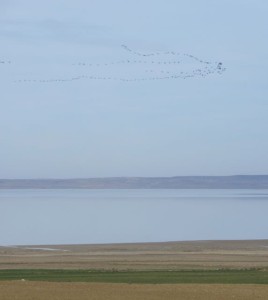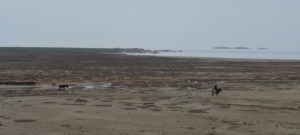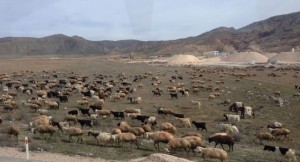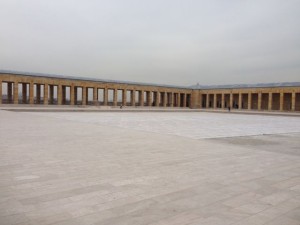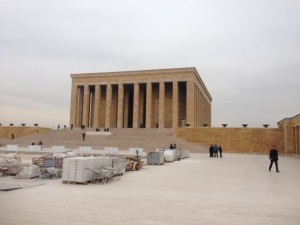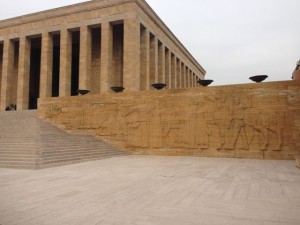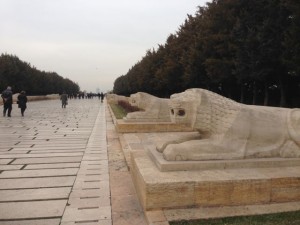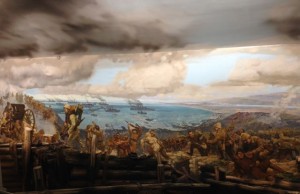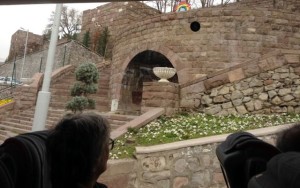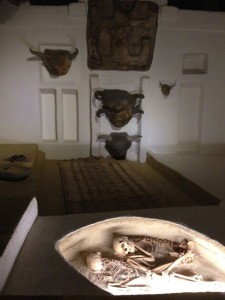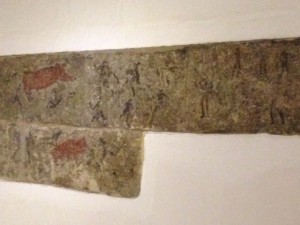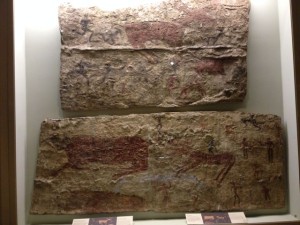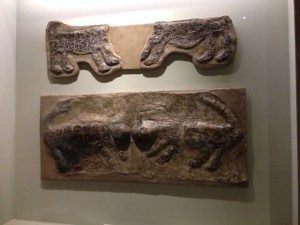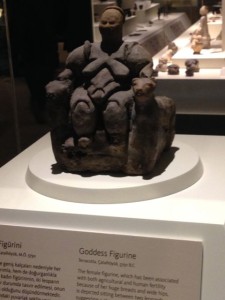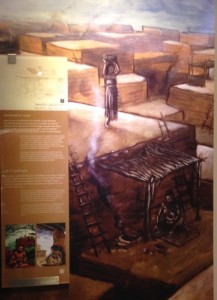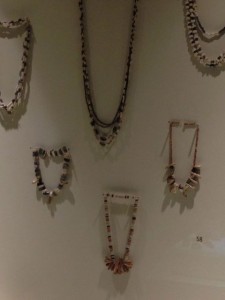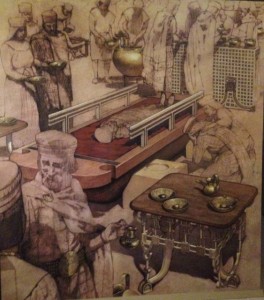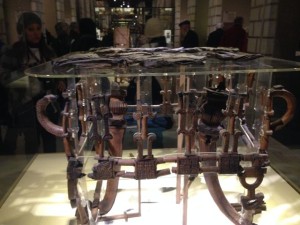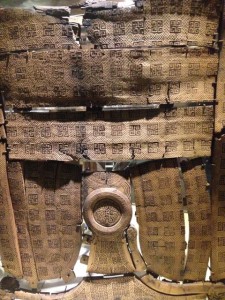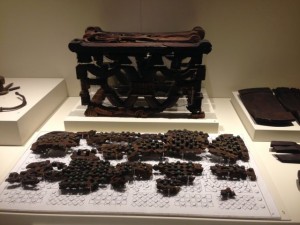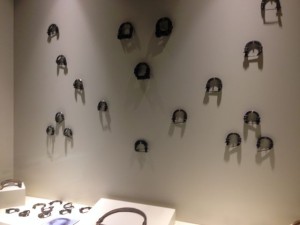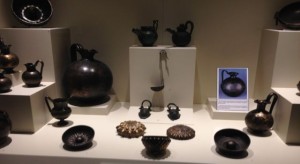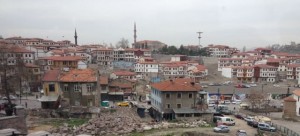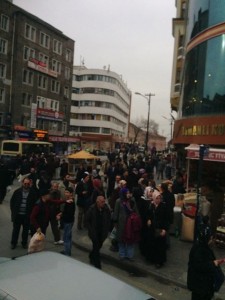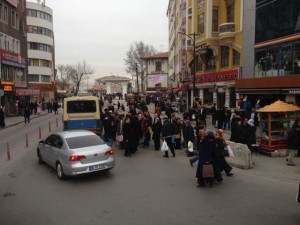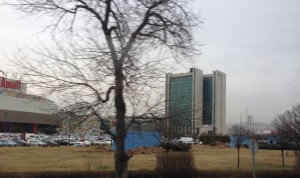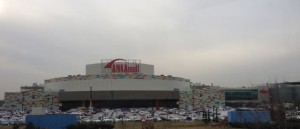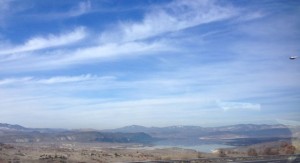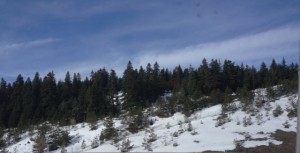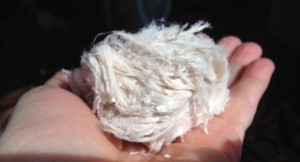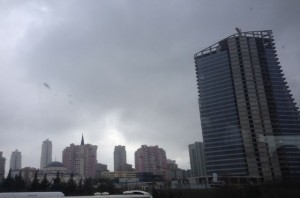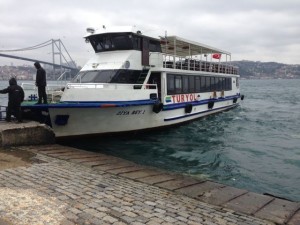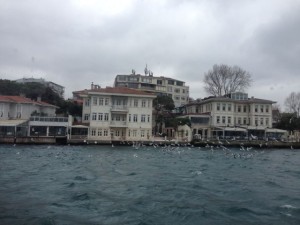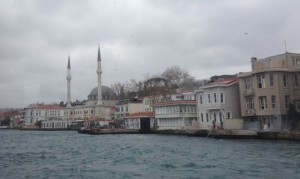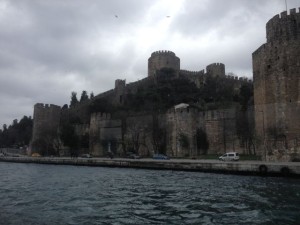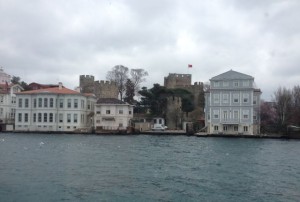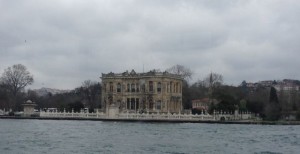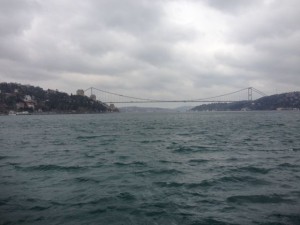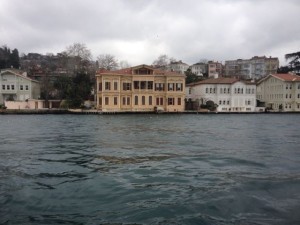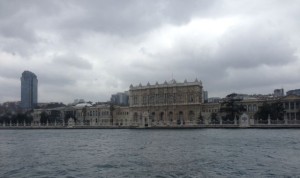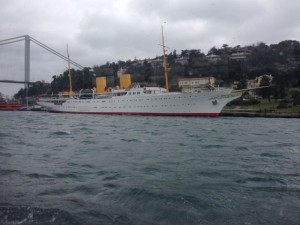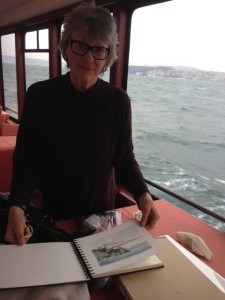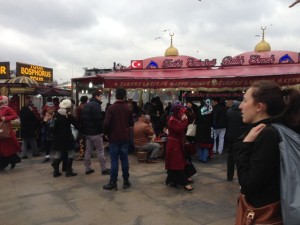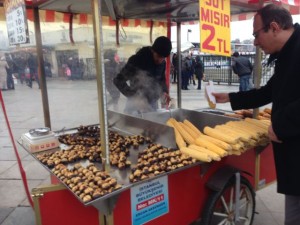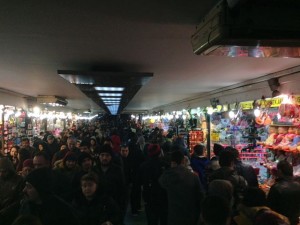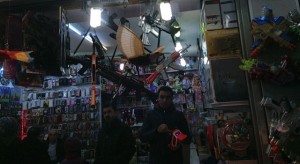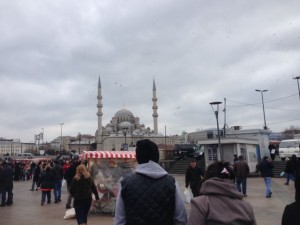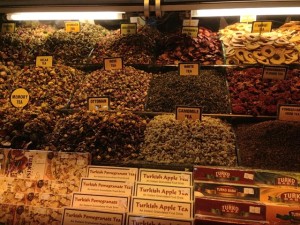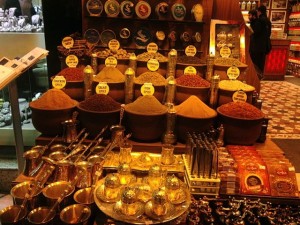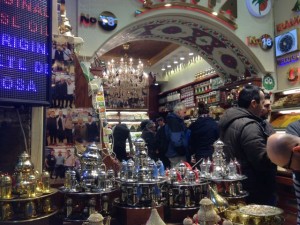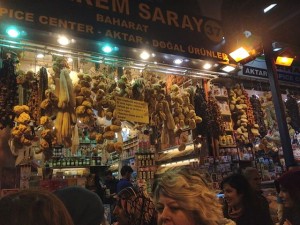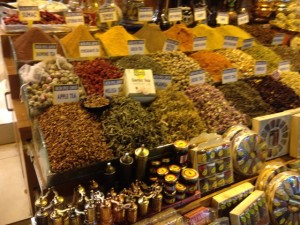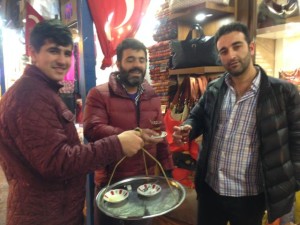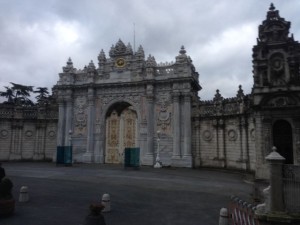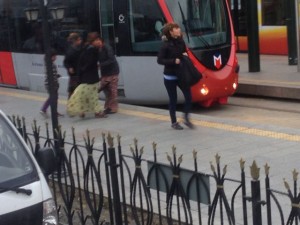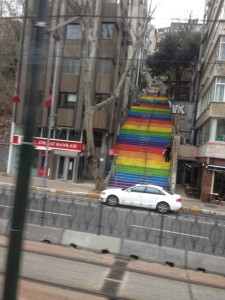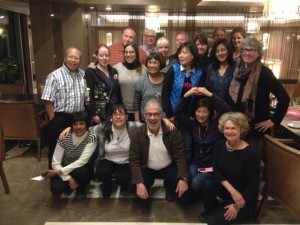Today, we have a 5 hour drive to Ankara, the capital and the second larges city in Turkey. Ankara was a small town when Mustafa Kamal established it as his headquarters for the independence movement.
On the drive, we pass Salt Lake, and we see hundreds of migrating cranes and flocks of long-haired sheep being herded by shepherds. Salt Lake is the shallow remains of a prehistoric inland sea and is very salty. Salt is harvested in the summer and used for roads, tablets to put into a tub, and baking powder to whiten teeth.
We also pass Mt. Hasam, the second volcanic mountain in Cappadocia.
Serder recaps the history for us: After WW1, the Ottoman Empire was divided up, and the Greeks were given the Aegean coast. Mustafa Kemal spent 3 years gathering support for fighting the occupation. The Greeks marched on Ankara to put a stop to Kemal’s movement, and there were battles from Ankara to Izmir, where Greeks burned the city before retreating.
Kemal turned Turkey from a monarchy to a republic (a representational democracy based on British parliamentary system). Kemal made major changes in society. He established surnames that hadn’t existed before (citizens chose their city’s name or father’s profession as a surname). He was given the surname Ataturk, which means the great Turk, by the Parliament.
He also brought in western ways, equal rights for women, equal pay, and the right to vote. He divorced, had no children, but he adopted several children. One daughter became the first fighter a jet pilot, the second became head of civil aviation. He sent a lot of village children who showed promise to great universities in the West. They returned to establish universities and a new emphasis on education. He westernized the alphabet. He was buried in the garden of the building he Ankara where he organized the independence movement. In 1953, they built a mausoleum and moved his body there.
Our first stop in Ankara was Ataturk’s Mausoleum. The mausoleum is built on top of the Frygian mound that was the first settlement and also the highest point in town. The mausoleum is modeled on a Roman square with the mausoleum raised at one end. It incorporates elements from every period of Anatolian history. It is filled with memorabilia from Ataturk’s life, gifts given and received, personal items, and lots and lots of paintings of his life.
The friezes echo Asyrian friezes.
The lions are modeled on Hittite lions.
Our next stop in Ankara was the Ankara Museum, which focuses on Anatolian history from the period from starts 100,00BC to 500BC. The museum is housed in what was a caravanserai from the Ottoman period (16th century). The caravanserai was built in a square with two stories of rooms, with the courtyard for animals. The marketplace was next door, beneath a dome. The Citadel walls date from the Byzentine period.
The Museum of Anatolian Civilization houses the largest collection of Bronze Age artifacts in the world.
The first exhibit is of the earliest houses discovered, with bones buried beneath the floor.
The museum also has the earliest wall paintings, dated to 6,000 BC.
The earliest goddess figure dates from 5750 BC and possibly depicts a woman giving birth.
This is a reproduction of what the earliest houses might have looked like.
Bronze age jewelry.
King Midas’s tomb was discovered nearby.
The depiction incorporates the items of furniture that were found in the tomb.
As we left the museum, we drove by shanty towns erected by villagers who squatted on government land, built houses, and eventually received title to the land. Those shanty towns are now being replaced by modern housing (in background).
Ankara was bustling with Friday traffic as we left.
Our hotel is right next door to the huge, modern AnkaMall. Oh boy!




